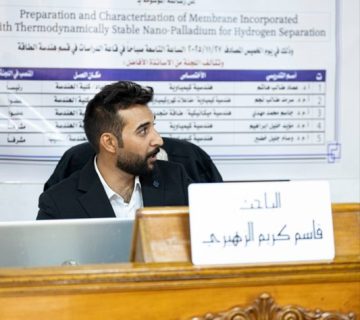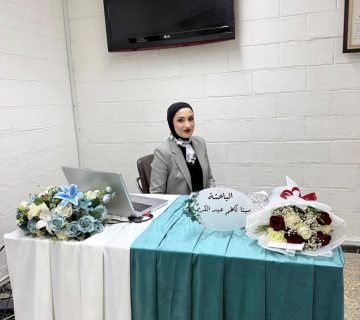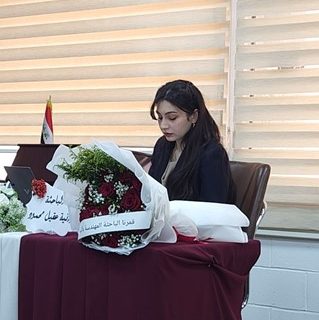On Wednesday, January 24, 2024, in the Dr. Mahdi Hantush hall at the Engineering College, a master’s student (Adnan Qahtan Adnan) discussed his thesis entitled (Fuzzy Logic Controllers of Blade Pitch Angle in Wind Turbines). A committee was composed of Discussion from the individuals listed below:
1- Asst. Prof. Dr. Nibal Fadel Farman / Department of Energy Engineering – College of Engineering – University of Baghdad / Chairman
2- Asst. Prof. Dr. Karim Hassan Ali / Department of Mechanical Engineering – College of Engineering – University of Baghdad / Member
3 -Scientific researcher. Muhanad Latif Abdullah / Iraqi Atomic Energy Authority/ Member
4- 1- Asst. Prof. Dr. Mohammed Khalil Hussain / Department of Energy Engineering – College of Engineering – University of Baghdad / Supervisor
Abstract
One of the most significant advanced technologies is the horizontal axis wind turbine (HAWT), which uses the aerodynamic force on the rotor blades to transform the kinetic energy of the wind into electrical energy. Due to the rotor blades’ aerodynamic structural behavior, pitch angle control in wind turbines is used in order to regulate the output power generation of the wind turbine and reduced the fatigue load in associated wind turbine parts. The main goal of this thesis is to compares different controllers and proposes a new controller for blade pitch angle in horizontal axis wind turbine. PID controllers, fuzzy logic controllers, and hybrid fuzzy-PID controllers, have been evaluated and compared to improve the performance of wind turbine, regulate the output power generation, and protect the wind turbine against possible risks caused by an unexpected increase in wind speed and output power. In this thesis, an advanced model of 500-kw HAWT is designed using MATLAB® 2022 Simulink based on two actual wind speed data. Additionally, three different types of controllers are suggested to be compared for BPA control: PID controller (PIDC), fuzzy logic controllers (T1-FLC, IT2-FLC, and IT3-FLC), and hybrid fuzzy-PID controllers (HT1-FPIDC, HT2-FPIDC, and HT3-FPIDC). Furthermore, the Mamdani and Sugeno fuzzy inference systems (FISs) are used and compared to find the optimal inference system used in the controller of a wind turbine. Two different optimization algorithms, Genetic Algorithm (GA) and Particle swarm optimization (PSO) have been applied and compared to find the optimal tuning of the PID parameter in the PIDC and H-FPIDC. The main objective function of these optimization algorithms is to minimize the error in the output power generation at fluctuating wind speed. PID controller and artificial intelligence presented by fuzzy logic controller have been compared to provide the stable output power generation of wind turbine. Finally, the modeling of Wind turbine including the controller has been validated and enhanced after applied second wind data. The results show excellent fit in both modeling and validated results. Also, the proposed optimal HT3-FPIDC based on PSO and Mamdani FIS provide the best controller of BPA in wind turbine.








